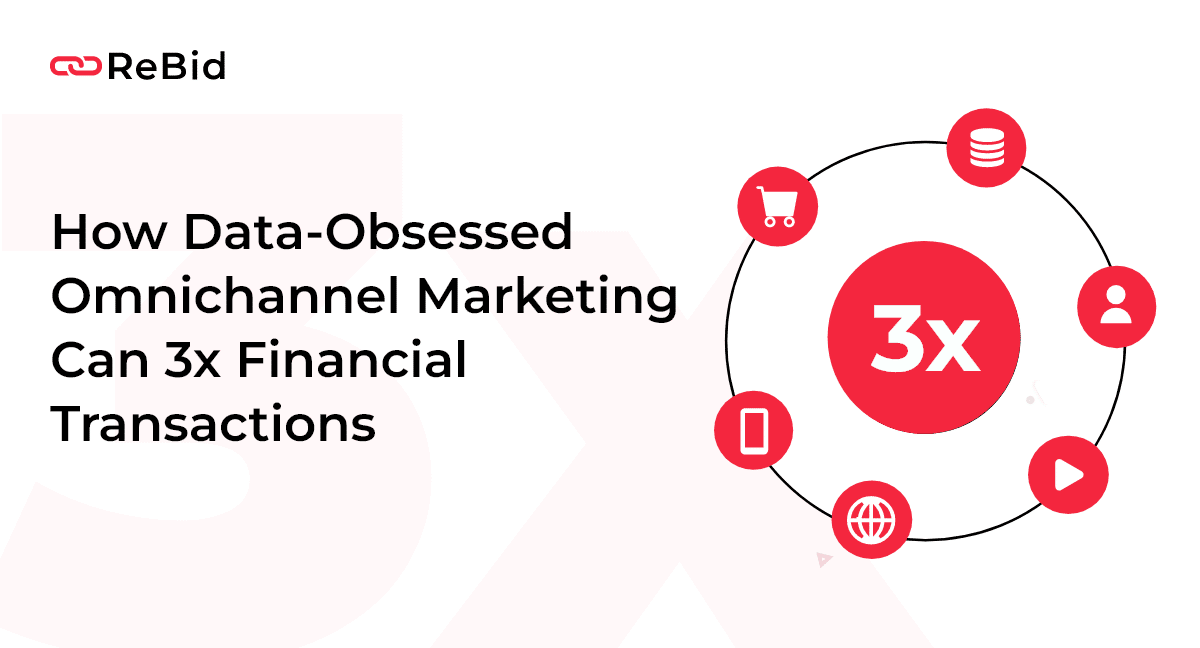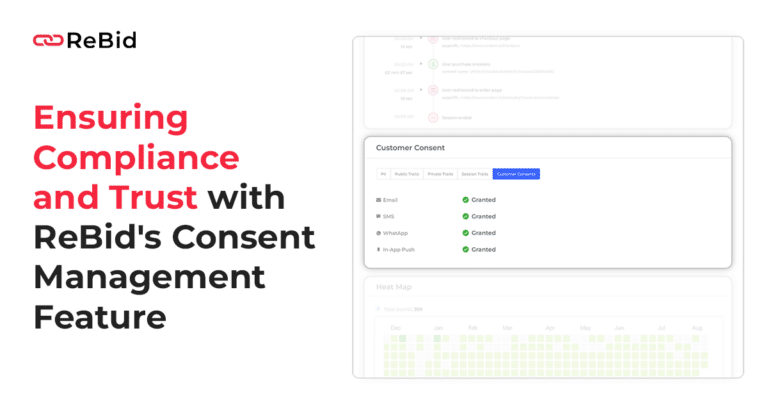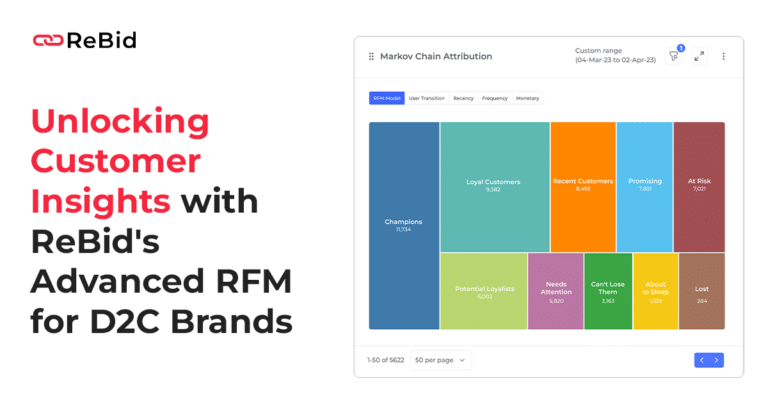Digital disruption in the banking sector is evident. Financial services companies are transforming products and marketing to cater to the digital-everything era. For example, banks have seen a 34% increase in credit card spending owing to digital transactions. Over two-thirds of adults around the world have now received and made digital payments. This change in habit presents a significant opportunity for banks and financial services companies – increasing digital transactions to capture more insights about their customers and continuously evolving their offerings in keeping with these insights. Especially with the threat of recession looming, banks must attract new customers and retain existing ones within their payments and services ecosystem. Digital and omnichannel financial experiences and marketing can power this for banks, but a poorly planned digitalization strategy can create new problems.
This blog discusses these challenges and how omnichannel advertising can cater to banks’ needs to increase transactions safely, sustainably, and rapidly.
Financial brands’ most pressing business challenges
Adopting digital methods to upscale financial services marketing is necessary for all companies in this sector. However, treating digitalization as a one-time solution is problematic. Digitalization is a multi-step project that includes clients, employees, and management. Here are some of the common and pressing challenges facing financial services companies.
Challenge 1: Digital education and balancing CX with fraud prevention
While most banks are readily shifting their services to digital platforms, making the customers comfortable with new technology doesn’t seem to be a priority.
For example, almost all bank accounts require checkpoints like OTP verification or a captcha. But for senior citizens who aren’t familiar with text messages or captchas UI, this method can be uncomfortable. These can also lead to fraud and mistrust towards the banks, causing them to lose customers at best and reputation at worst. In the race to increase digital transactions, customer education is an essential tool.
Many banking customers from older generations are open to adopting new technologies. But the lack of effort in educating them and the assumption that technology is equally accessible to everyone could drive your customers away.
Focusing on product usage and UX to balance customer experience with fraud prevention is essential across your customer cohorts to ensure that they keep coming back for transactions with you.
Challenge 2: Irrelevant ads
Financial services focus more on digital ads than personalizing customers’ online experiences. In 2020 alone, financial service companies spent $19.62 billion collectively on digital advertising. But these advertisements can negatively affect the company, especially if they are overdone, not personalized, or straight-up irrelevant.
Digital native customers are unhappy with what their banks deliver online. Nearly 50% of millennials feel that their banks do not realize their individual needs, and around 22% are ready to switch to another financial service provider for the same reason.
To retain these customers, banks must focus on providing personalized financial coaching and ads based on actual life needs rather than generic content.
Challenge 3: The rise and rise of fintech challengers
Another challenge faced by traditional financial institutions is the fintech disruption. In the past two years, the number of fintech companies more than doubled from 12,000 in 2019 to 26,000 in 2021.
These companies focus on customer-centric strategies, giving tough competition to traditional banking companies. Customer groups that prefer more personalization and pace, such as Gen Z, are drawn toward new fintech challengers crowding the market.
It’s important to understand that traditional banks’ services are similar to those of fintech challengers. However, fintech’s cultural agility, product UX, and marketing’s omnichannel presence dramatically impact customer acquisition and retention. If banks want to perform at the same level as modern fintech brands, they must adopt cultural agility and a data-obsessed omnichannel strategy.
Acquire, retain, and 3x transactions with customer data and omnichannel advertising
Omnichannel advertising is an integrated approach that covers all touchpoints to move leads down the sales funnel. When deeply rooted in customer data and, hence, hyper-targeted, omnichannel advertising attracts customers and maximizes transactions.
Let’s see how data-obsessed omnichannel advertising addresses the financial services’ most pressing challenges.
Benefits of customer data and omnichannel advertising for the banking sector
Benefit 1: Build customer trust without compromising on UX
Banks are a point of trust for customers who invest their wealth in these institutions. But when the same banks force customers to adopt technologies they don’t understand, their confidence is shaken to a point where they consider switching to another service provider. This becomes especially crucial for banks looking to guardrail transactions for fraud prevention. There’s a better way to do it!
First, banks must take an educational approach to new technologies and touchpoints. For example, replace generic ads with informational content that teaches customers how to operate the payments app and fraud prevention checkpoints or apply for a debit card online. This education-first approach strengthens the trust between the bank and the customer and encourages them to utilize online banking without fear. Product analytics can help you understand how different demographics use your products and where they face roadblocks. Using sticky banners at those specific touchpoints, personalized for each customer, can address the roadblocks and keep your customers coming back for transactions.
An even better way to do this is to reduce the checkpoints while guard railing transactions. Customer data comes in handy in recognizing and blocking fraudulent transactions before the customer responds or needs to. No OTPs, no captchas – just plain simple mapping of attributes of a fraudulent transaction with a genuine one – in a fraction of a second.
Customer data and product analytics enable the balance of CX with fraud prevention. Ask ReBid Insights how you can achieve it for your bank.
Benefit 2: Become a trusted financial advisor with hyper-targeted ads
The next and most crucial step in your customer data and marketing journey is to personalize the content in your marketing campaign. Nearly 72% of customers rate personalization as the highest priority while availing of banking services. Customers are also more than willing to provide data for personalization as long as they have control over it. But traditional financial institutions rarely leverage their abundance of customer data to personalize, simply because they are conservative in their approach, having always been a highly regulated industry. This now needs to change, and your customers are ready for it too.
A robust customer data platform and AI-based analytics are all it takes to utilize your customer data to hyper-personalize every ad and marketing touchpoint. AI helps you analyze customer journeys through online spending, card usage, and other activities. A CDP can give you deeper insights into life stages and lifestyles. These insights can collectively sharpen what you say to your customers and when.
For example, education loan ads for those about to finish their undergraduate degree, easy EMI on car loans for someone who just opened a salary account or has been checking out car dealerships, or related content. Even personal finance tips and tricks for those who have been overspending. Your customer data is a goldmine to keep your customers returning for transactions – either to spend or save!
Benefit 3: Catch your customers where they are, in ways they find meaningful
Once you have analyzed customer data and have an overall omnichannel advertising strategy in place, the next step is creatives personalization for each customer and, in our times, even for each channel. But manually building hundreds of ad creatives for every channel is tricky, expensive, and error-prone. You can simplify this process with AI-based tools in the ReBid Madtech suite.
These tools let you create multiple ad creatives that fit different ad spaces and speak to your customers’ most pressing needs. The marketing team only needs the big-picture strategy and the core creatives for their ad campaign. The AI tool can refresh and redesign the ads to fit the requirements of every customer and every channel. Utilizing this strategy saves hours of manual effort and creates entire ad campaigns with a much lower time lag.
Clearly, generating unique ad campaigns for each customer is easy when you have the right tech stack on hand. You can time the campaign depending on customers’ purchase activity and optimize channels and messaging based on customers’ responses and overall campaign performance. For example, some customers respond better to emails on weekdays, while others prefer SMS reminders for online services. The timing, channel, and frequency collectively play a crucial role in determining the success of your marketing campaign and boosting your transactions.
No one-size-fits-all approach works for finance marketing
Omnichannel financial marketing and advertising are all about leveraging customer data and product analytics to provide a safe, convenient, and hyper-personalized advertising experience. And to maximize your use of data, equipping your marketing function with the right tools is essential.
- Invest in a CDP for holistic customer and product analytics: Since the data collection in financial services is vast, a customer data platform (CDP) is the best way to ensure the consolidation of all the data in one place. It collects, integrates, and analyzes customer journeys in offline modes, such as ATMs, and online methods, such as digital app transactions. Financial services brands can utilize these holistic data sets to improve advertising and enhance customer experience.
- Boost transactions with suitable ads at the right time at the right place with automated media buying: Another vital aspect is placing the right ad in an appropriate space and continuously optimizing not just creatives but your overall campaign. Doing this requires an automated media buying platform that understands your target audience, finds them, and runs specific advertising campaigns to grab attention and persuade action. Consider a platform that integrates various advertising platforms, such as CTV, DOOH, and OTT, to connect with your digital native customers where they are.
Summing up
Traditional banking and finance companies can simplify their customer acquisition strategy through omnichannel advertising. As fintech companies are booming, traditional financial service companies must improve their marketing from generalized to personalized campaigns. They need to go from POS banners and relentless cold calls to CTV and DOOH.
Investing in marketing automation and data stacks is optimal if you also want to boost transactions in a safe, sustainable, and experience-oriented manner.




